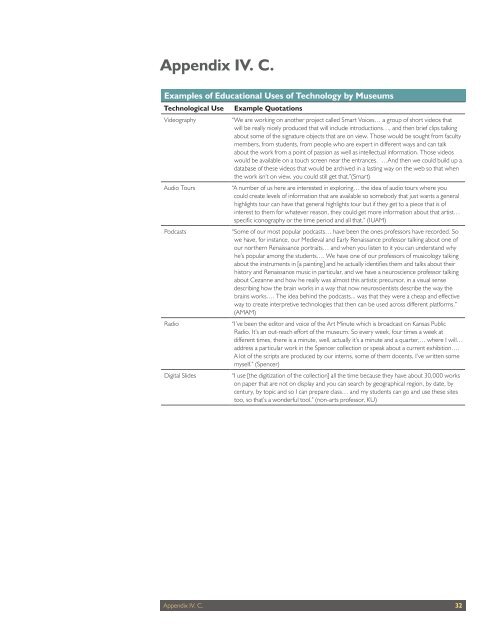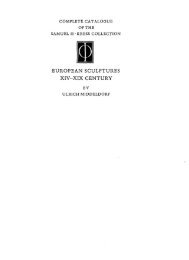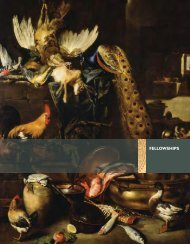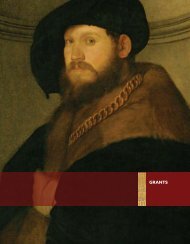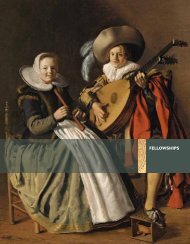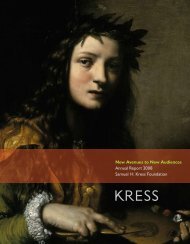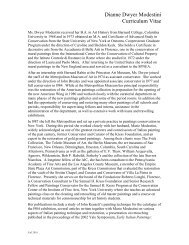The Campus Art Museum - Samuel H. Kress Foundation
The Campus Art Museum - Samuel H. Kress Foundation
The Campus Art Museum - Samuel H. Kress Foundation
Create successful ePaper yourself
Turn your PDF publications into a flip-book with our unique Google optimized e-Paper software.
Appendix IV. C.<br />
Examples of Educational Uses of Technology by <strong>Museum</strong>s<br />
Technological Use<br />
Videography<br />
Audio Tours<br />
Podcasts<br />
Radio<br />
Digital Slides<br />
Example Quotations<br />
“We are working on another project called Smart Voices… a group of short videos that<br />
will be really nicely produced that will include introductions…, and then brief clips talking<br />
about some of the signature objects that are on view. Those would be sought from faculty<br />
members, from students, from people who are expert in different ways and can talk<br />
about the work from a point of passion as well as intellectual information. Those videos<br />
would be available on a touch screen near the entrances. …And then we could build up a<br />
database of these videos that would be archived in a lasting way on the web so that when<br />
the work isn’t on view, you could still get that.”(Smart)<br />
“A number of us here are interested in exploring… the idea of audio tours where you<br />
could create levels of information that are available so somebody that just wants a general<br />
highlights tour can have that general highlights tour but if they get to a piece that is of<br />
interest to them for whatever reason, they could get more information about that artist…<br />
specific iconography or the time period and all that.” (IUAM)<br />
“Some of our most popular podcasts… have been the ones professors have recorded. So<br />
we have, for instance, our Medieval and Early Renaissance professor talking about one of<br />
our northern Renaissance portraits… and when you listen to it you can understand why<br />
he’s popular among the students…. We have one of our professors of musicology talking<br />
about the instruments in [a painting] and he actually identifies them and talks about their<br />
history and Renaissance music in particular, and we have a neuroscience professor talking<br />
about Cezanne and how he really was almost this artistic precursor, in a visual sense<br />
describing how the brain works in a way that now neuroscientists describe the way the<br />
brains works…. <strong>The</strong> idea behind the podcasts... was that they were a cheap and effective<br />
way to create interpretive technologies that then can be used across different platforms.”<br />
(AMAM)<br />
“I’ve been the editor and voice of the <strong>Art</strong> Minute which is broadcast on Kansas Public<br />
Radio. It’s an out-reach effort of the museum. So every week, four times a week at<br />
different times, there is a minute, well, actually it’s a minute and a quarter,… where I will…<br />
address a particular work in the Spencer collection or speak about a current exhibition….<br />
A lot of the scripts are produced by our interns, some of them docents, I’ve written some<br />
myself.” (Spencer)<br />
“I use [the digitization of the collection] all the time because they have about 30,000 works<br />
on paper that are not on display and you can search by geographical region, by date, by<br />
century, by topic and so I can prepare class… and my students can go and use these sites<br />
too, so that’s a wonderful tool.” (non-arts professor, KU)<br />
Appendix IV. C.<br />
32


